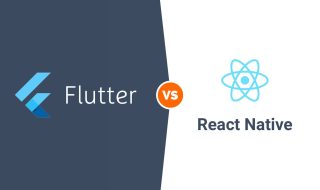
How to choose the right board portal software is a common query from company leadership.
Virtual boardroom software has penetrated the global corporate sector in a very short time. Companies, government agencies, organizations, enterprises, unions, clubs, and nonprofits are rapidly switching to board portal technology.
However, choosing virtual board software that suits your organization or company is itself a tricky process, especially if you are new to this technology.
Which vendor should you trust? What features should you have in your boardroom software? How to assess the quality of the service?
These are some important questions to answer, and this guide is all about best practices for choosing the right board management software.
How to choose the right board portal software

Board management software is a paperless meeting solution and cloud-based document repository for directors, board secretaries, chairpersons, CFOs, CEOs, investors, stakeholders, executive committee members, etc.
Before moving to the best boardroom selection practices, it is important to understand the basic functions of this technology. The board software is primarily designed for:
- Streamlining on-site or online board meetings
- Creating a centralized board document management system
- Ensuring a safe environment for inter-organization communication and data sharing
- Simplifying complex deal management process
- Maintaining bank-grade security of corporate data
- Providing better insight into the boardroom’s function
1. Accurate need identification and budget setting
The first thing you need to ask yourself is why you need board portal software. Although board software provides a multitude of benefits, you should understand the following:
- How can it help your organization?
- Do you intend to use it temporarily or regularly?
- How will it affect the overall workflow of your company or board?
Many organizations use board software temporarily for external transactions or dealing, while others use it for regular communication between board members and investors.
Also, it is important to know how much you can invest in your board software. Budget setting and accurate need identification will help you explore more relevant options.
2. Virtual boardroom provider analysis

Boardroom features come later; a detailed boardroom vendor analysis should be done at the start. That’s because you will be dealing with your vendor as long as you use their services. Here are some important things to consider in a boardroom vendor:
- Online customer reviews. For starters, you can read board meeting software reviews from trusted internet resources. Notable websites for online board portal reviews include TrustRadius, G2, Capterra, and Software Advice. Customer reviews are the facts that define the difference between a vendor’s advertisement and reality.
- Geographical presence. Your ideal vendor is someone having a physical presence in your locality. It will build trust, and you can actually visit their outlet or office in case of urgent matters. In fact, boardroom vendors with data centers in different geographical locations are a better choice from a data safety perspective.
- Sustainability. How long a potential vendor is serving a specific industry is another important question to ask. Modern-day service providers are offering specialized services in different industries. Some cater to the needs of nonprofits and associations, while others target the financial sector, etc. Look out for someone that has a proven experience in your industry.
- Security certifications. Choosing a vendor that is not ISO-certified can jeopardize your security. ISO 27001, ISO 27081, and ISO 27017 are some important certifications for vendors. Other regional certifications include FINRA, GDPR, SOC2, HIPAA, FISMA, etc.
- Customer support service. Customer support service is one of the most important elements to consider. Only well-trained, cooperative, and knowledgeable customer support service can provide timely and result-oriented solutions.
3. Online boardroom security consideration

Board portal security is one of those elements that somehow triggered you to use this technology. Therefore, look out for basic security features needed for data protection. Common examples include:
- Single sign-on
- Fingerprint login
- Two-factor authorization
- Document access control
- Document access revocation
- Digital watermarks
- View only mode for sensitive documents
- SSL data encryption
- Audit logs
4. Review of the necessary document and meeting management features

Meetings and document management are two primary functions of board portal technology. Therefore, you should never miss out on the necessary features like:
- Meeting agenda and minutes builder
- Meeting notes builder
- HD tools for audio or video conferencing
- Voting tools
- Electronic signatures
- Online polls
- Presenter mode
- Task manager
- Full-text search
- Drag-and-drop
- Bulk document uploads
- Document viewer
- Excel file viewer
- Document templates
Other than that, make sure your potential vendor supports your current operating system and has dedicated mobile apps for remote access.
Final words
There is no rigid pattern for board portal selection. However, we recommend you consider the following elements for better decision-making:
- Need identification
- Virtual boardroom vendor analysis
- Boardroom security consideration
- Review of the necessary meeting and document management features
Hopefully, following these steps will take you to selecting a proper board portal solution. Be sure to conduct your independent research and comparison of the most suitable options to make a perfect choice.




